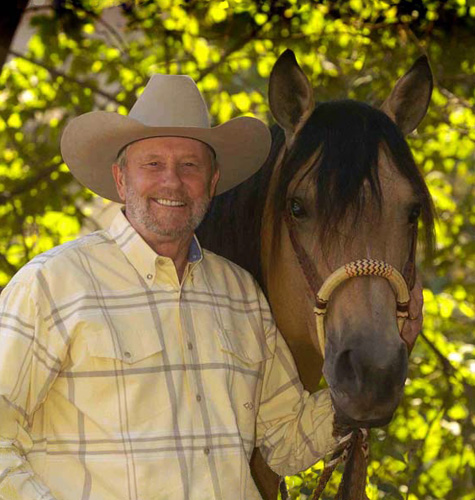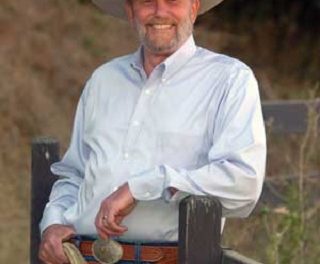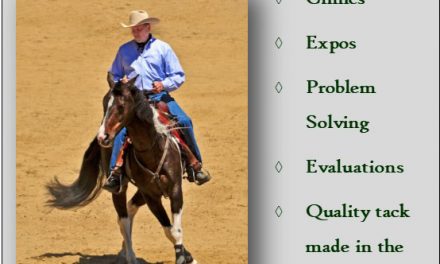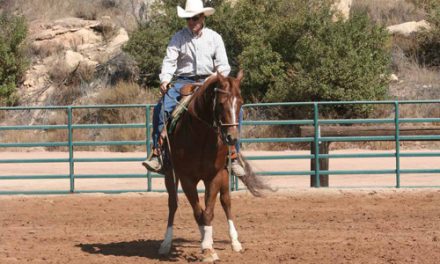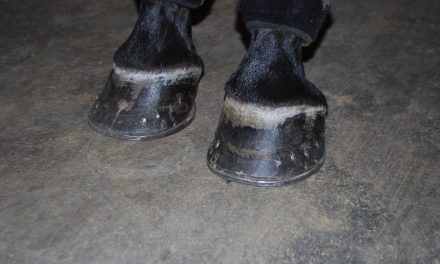 You have been working with your horse on the ground getting her used to the equipment (bridle, bit, blanket, saddle), and now its time to take that first ride. The purpose of the first two or three rides is to get your horse comfortable with you on her back. You must focus on translating the ground exercises you have already taught into under-saddle cues. If you have been consistent in your cues, you will see that the horse is responsive and easy under saddle, even in the first few rides. Don’t be too demanding, just let her begin to understand your cues to guide her. You may look and feel like you are all over the place but if you stay focused with a game plan and picture your horse guiding correctly, your horse will improve.
You have been working with your horse on the ground getting her used to the equipment (bridle, bit, blanket, saddle), and now its time to take that first ride. The purpose of the first two or three rides is to get your horse comfortable with you on her back. You must focus on translating the ground exercises you have already taught into under-saddle cues. If you have been consistent in your cues, you will see that the horse is responsive and easy under saddle, even in the first few rides. Don’t be too demanding, just let her begin to understand your cues to guide her. You may look and feel like you are all over the place but if you stay focused with a game plan and picture your horse guiding correctly, your horse will improve.
Work on basics in the saddle. Replicate the basics you established on the ground into saddle time. Establish a solid go-forward, stop, back, moving the hips over, and shoulder control routine. Older, as well as young horses can become confused during a lesson. That is why it is important to be consistent with our training and ask with a lot of patience. Some horses catch on more quickly than others, just like people. We need to be tolerant with them.
Once your horse is comfortable and working well with the basics, begin to work on giving to the bit. This is one of the most important things you can accomplish with your horse. You will likely have to do hundreds of baby-gives and gives until it becomes a true conditioned response. As part of this training you will also be teaching the very important one-rein stop and you will be gaining control of the nose, head, neck, shoulder and hips under saddle.
Once you feel comfortable on the horse, it is good to mix up your training routine by going out on the trail or doing something different in the arena. There is a young girl at my ranch who we all adore, who does a little reining, rides in Western Pleasure or English classes, and who has a nice little Quarter horse. One day she put a small English saddle on my horse Jaz and took her over several cavelletis, a series of height-adjustable wooden jumps for schooling horses. I have taken Jaz over cavelletis on a line but I had never ridden her over them. This was different for her but she did fine. This mix up of the routine was good for her, allowing her to experience something new. Doing the same exact routine can be boring for you and your horse. The basic exercises need to be done but we should have fun with our horse and we need to make the lessons enjoyable for the horse too.
We all want our horses to be versatile in the arena and on the trail. To build your horse’s abilities, I suggest that later, when your horse gets better and better with simple exercises, you introduce new lessons. For example, leg yields, diagonals, and counter arc bends. You can also work on crossing objects or do a lot of walk, trot, canter transitions to make your horse more versatile.
I explain many of these exercises in my book Building Your Dream Horse and you can find more information on my Web site, www.charleswilhelm.com, where there are helpful articles. In addition, read lots of general horsemanship books and go to clinics. Every bit of new knowledge will help you be more successful with your horse.

